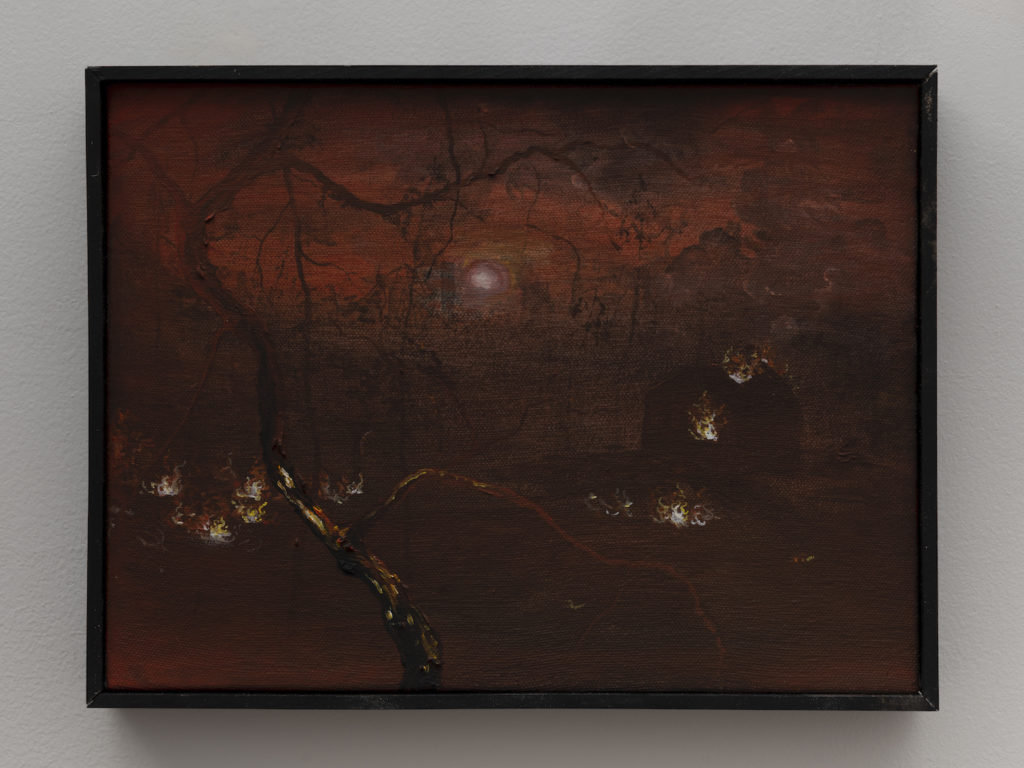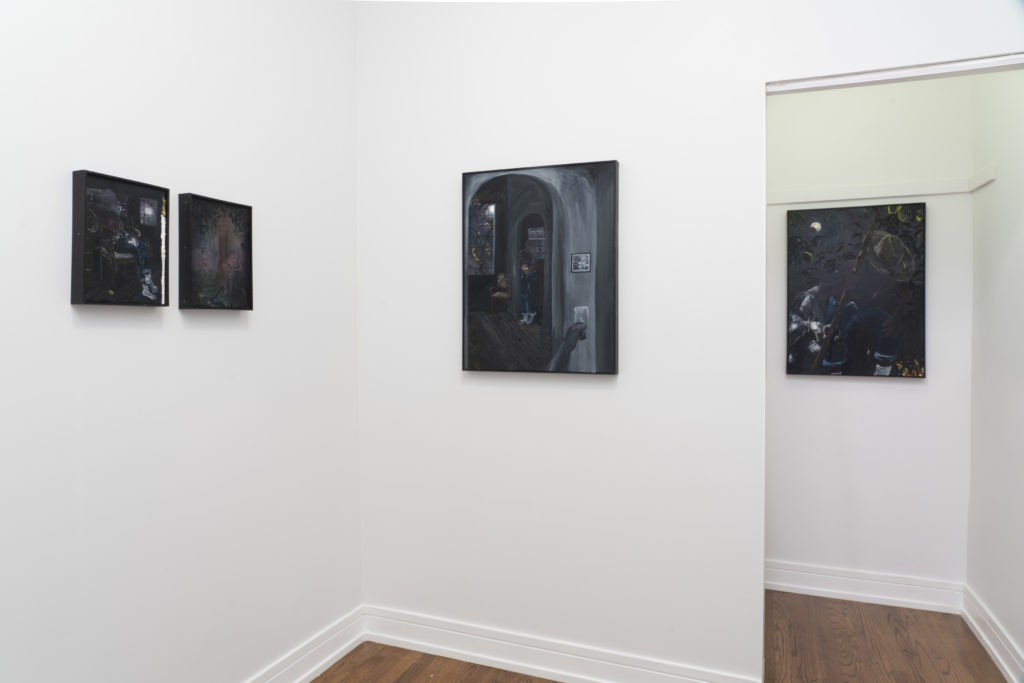Doubling in the Dark: A Review of Morgan Mandalay at Extase
for Newcity Art, February 2020
At Extase, an apartment gallery in Ukrainian Village, six paintings hang in an otherwise unfurnished front bedroom, where artist Morgan Mandalay uses a primarily drab color palette with pops of yellow and fire red to depict night skies, shrouded figures and dark interiors. In the recessed space of a would-be closet, Mandalay’s stunning “In the Garden of Heripedes” portrays a hunched figure dressed in straw hat and blue jeans as he walks with a tall cane through a moonlit lemon grove. A small creeping blaze burns in the bottom right corner of the piece, and as with several other pieces in the exhibition, the flames’ warm presence contradicts the mood of a twilight hour as they curiously pry themselves into the foreground, neither revealing their source nor their potential for growth.

“On Colonus” marks the ninth exhibition for organizer Budgie Birka-White at Extase and the most recent body of work from the Chicago-based, California-born artist Mandalay. Through heavily implicative references to Sophocles’ play “Oedipus at Colonus,” and other distinct moments in classic literature and art history, this work provides the viewer with a complexity of subject matter and nuanced brushwork that has fallen out of favor in recent painting.
Small in scale, these quiet and tensile works by Mandalay shift from his previous musings on Paradise to a more subtle and personal world shaping, although “Forbidden Fruit” references Adam and Eve in the garden of Eden with the subtle substitution of lemon for apple. Best exemplified amongst Mandalay’s interior paintings are “Reflection Underground” and “Memory Palace,” in each piece a burning moon framed by the grid of a window pushes inward to light the room as the blacks, grays and navy blues counter the painting’s light source. And yet again, whether a candle inside the home, or a burning branch, the presence of a fire, cleansing and pure, remain a recurring theme with “On Colonus.” Through Mandalay’s process of doubling, he does well to reflect both his skills as a painter, and his ability to present the duality tied into the themes of memory and introspection represented on the canvas.

For example, Adam and Eve may be the only explicit references to literature in this body of work, yet we do not see them in a moment of shame or atonement, but rather one of indecision; salvation and damnation exist side-by-side in this scene. “AUG 1961 in the Dark” features a hand nearing a light switch, but again, we know not whether this hand is reaching toward the switch, or pulling away. For Mandalay, this hand reaching into the space of the painting from the foreground sources the reaching arm silhouetted by a setting sun in the painting “The Raft of the Medusa,” by French Romantic painter Théodore Géricault. Pulling from this moment of desperation, where the raft’s passenger reaches toward a ship spotted on the horizon that will either save those left on the raft, or fade away, representing their last chance at survival, Mandalay pulls from the epic to express the infinitesimally personal.
“We do not dislike everything that shines, but we do prefer a pensive luster to a shallow brilliance, a murky light that, whether in a stone or artifact, bespeaks a sheen of antiquity.”
—Jun’ichiro Tanizaki, “In Praise of Shadows”